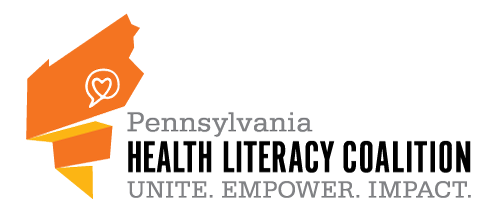When developing health materials, we sometimes concentrate on language and reading level while overlooking the clarity and usefulness of numbers. The reader’s ability to understand the meaning of the numbers being presented to them is critical to their ability to follow sound health guidance. The Centers for Disease Control and Prevention (CDC) defines numeracy as the ability to access, use, interpret, and communicate mathematical information and ideas in a range of daily situations.[1] Based on data from the Program for the International Assessment of Adult Competencies, 9 out of 10 U.S. adults do not have adequate numeracy skills for a range of daily situations. As we strive to make health literate materials, we must consider how numbers can improve or reduce a reader’s understanding. Below are four tips you can use to help make numbers in your health materials more accessible for everyone:
Identify the Communication Goal(s)
Include only numbers that are necessary to the reader’s understanding of key concepts, and avoid using numbers that do not support the primary goal of the document. Numbers can be a powerful way to emphasize your point when used in a way that does not distract from the main message of your material.
Provide Numbers With Context
Although numbers can be intimidating, including numbers adds credibility to the information being shared. Individuals with lower numeracy and health literacy may have difficulty conceptualizing numbers in health materials. Providing a statistic or figure without context may cause the reader to glaze over it or become confused. By providing a brief explanation or a simple visual of what the numbers mean, you can make the information actionable for the reader.

Example: A serving size of cheese is about an ounce and a half (1.5 oz.). That is about the same size as 4 dice.
Lower the Difficulty Level
Avoid asking the reader to do any calculations in your materials. Frequencies or fractions are more accessible than percentages to readers of all numeracy levels. If you are using multiple frequencies, use the same denominator to make it easier to understand.
Example: In 2015, 7 out of 10 U.S. adult smokers said that they wanted to quit smoking. In 2015, 3 out of 10 U.S. adult smokers reported using counseling or medication when trying to quit.[2]
Review, Assess and Revise
Use assessment tools such as the PEMAT-P from the Agency for Health Research Quality (AHRQ) and the Clear Communication Index from the Center for Disease Control (CDC) that include questions meant to test whether or not the numbers used in your health materials are necessary and accessible to a broad audience.
By using numbers effectively, you can improve the health literacy of your materials and help people at all numeracy levels take their medication correctly, gain a better understanding of their condition(s), and make well-informed decisions regarding their care.
For another short piece on numeracy, check out CommunicateHealth’s We Heart Health Literacy blog. In their Numeracy 101: Making Sense of Numbers During COVID-19 piece, they discuss numeracy in relation to the COVID-19 pandemic. For a more in-depth exploration of numeracy and its implications, we recommend Ellen Peters’ book “Innumeracy in the Wild: Misunderstanding and Misusing Numbers”. Dr. Peters delivered a presentation on numeracy for the PAHLC June 2020 webinar series and discussed her research on how numeracy levels impact overall decision making.
If you would like feedback on materials, or help implementing these best practices, let us know. Reach out to Jibreel Clark-Oliver CHES, Project Coordinator, joliver@hcifonline.org. We are here to support you in making information accessible, actionable, and health literate.
[1] Understanding Literacy & Numeracy: https://www.cdc.gov/healthliteracy/learn/UnderstandingLiteracy.html
[2] Smoking Cessation: Fast Facts: https://www.cdc.gov/tobacco/data_statistics/fact_sheets/cessation/smoking-cessation-fast-facts/index.html
